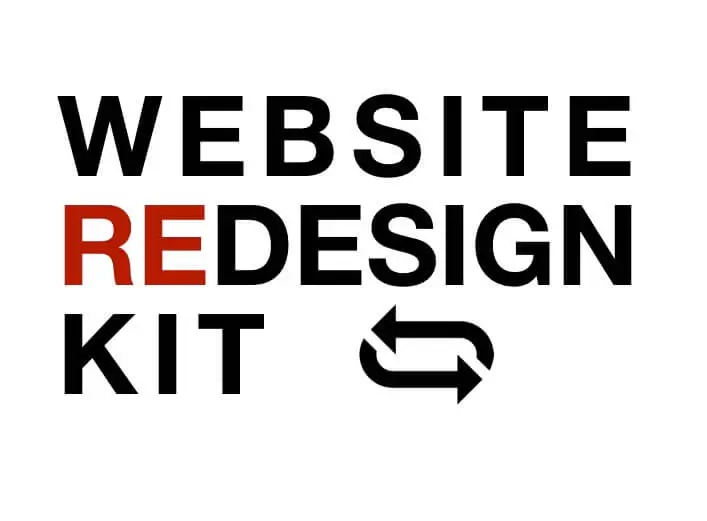Does Your Website Suck?
Picture your website. Does it make you cringe? Are you almost happy no one visits it? While we hope this isn’t the case, the fact is a lot of people are struggling to get their businesses noticed because of bad websites.
Your real estate website can be a goldmine or your greatest disappointment, but either way, you know you need one–and there’s a good chance it’s not the one you have now. To compete in today’s market, you need a website that’s easy to use, multifunctional, professional looking, and built using the latest technology.
83% of all property searches start online.
There’s one small issue, of course: You don’t have the tens of thousands of dollars it takes to hire a top notch design team who’ll take care of the entire process. That means you’ll need to be responsible for some portion of the planning and construction of your site. If this is starting to make your typing hands cold and clammy, fear not: the Placester team is here with some advice.
Why Your Site Is So Important
By now, we’re sure you have some idea of how important the Internet is to running your real estate business. But just to drive the point home, here are a few quick statistics on the subject.
- 78% of Internet users research products online. That number rises to 88% for households with incomes over $75,000.
- More than a billion people per month use Google to search for something.
- 83% of all property searches start online.
Your job has always been to help people find a place to live, and usually that just meant hanging a shingle and waiting for people to call. But opening a fancy office in a prime location isn’t going to cut it anymore when it comes to growing a real estate business. As these statistics illustrate, search is the new real estate. That means it’s imperative that you take steps to control or own the online search for properties in your region and niche.
Signs That You Chose the Right Solution
Here are a few characteristics to look for when evaluating your real estate website. You’ve chosen wisely if:
- Your site is stored on your own domain name, like wisconsonrealestate.com or marycollins.com
- You or anyone on your team can update your site instantly without much technical experience
- You have the freedom to change the design at any time
- Your site is totally customizable
- Your site is automatically and fully optimized for search
- Your site allows you to create one-off pages for special promotions with one click
- Your site is fully integrated with video, audio, and any other kind of multimedia
- Your site is completely owned and controlled by you
Check marks next to all of these? Congratulations, you’re in great shape. X’s? Looks like you’re due for a change. But before we talk about how to redesign, let’s talk about why.
What a Website Does: Push vs. Pull
When we talk about using your website to market yourself and your listings, we’re talking about a specific kind of marketing, a relatively new kind of marketing. But let’s consider the traditional methods first.
Back when the world was round, real estate sellers used “push” marketing to great effect. The idea was to interrupt people, then get them to pay attention to what you were saying. Big signs, print advertising, open houses, direct mail, and broker tours were the norm. Conversion rates were low, and the work was difficult, but these were necessary evils–after all, there was no other way to operate.
Today, however, the world is no longer round. Thanks to globalization and the Internet revolution of the last two decades, it’s flat again, and consequently people across the country expect their information to arrive not roundabout, but in a straight line. The new reality is that unless they’re already listening, people don’t care about what you have to say, and most likely can’t hear you above all the other noise vying for their attention. People want information on their terms.
Selling to people who actually want to hear from you is more effective than interrupting strangers who don’t.
— SETH GODIN
That’s where the “pull” comes in. Pull marketing is known by many names. Some have termed it permission based marketing; others, inbound marketing. Whatever you call it, it’s about getting found online by people who are actually looking for information about real estate, then giving them valuable, easily digested answers to their questions. Marketers across every industry have adapted to respond to the pull, and today, SEO, blogging, up-to-the-minute property information, video, and social media make up the real estate professional’s toolkit.
Pull marketing is about answering the questions that people are asking. It’s about being remarkable, and your redesigned website needs to have this as its ultimate goal.
Redesigning Is Not Designing
Unless you’re a brand new agent (or, perhaps, a really old one), chances are you already have some kind of presence on the Internet, whether it’s a full-fledged website or just a page on your agency’s. But creating a website isn’t enough: you have to maintain it as well.
We’ve said it before elsewhere, and we’ll say it again: your real estate website is never finished. Instead, it’s always evolving. But you have the power to control that evolution and steer it in the right direction, and just like any step in the evolutionary ladder, that means making room for new and more advantageous traits while preserving the best ones from the old site.
The best way to start is by pinpointing why you’ve decided to redesign in the first place. Some of these are good reasons. Some are not. First, here’s a sample of the bad.
Why You Shouldn’t Redesign Your Site
1. You don’t like the look of the old site.
Being concerned about the look of your site isn’t necessarily a bad thing. After all, if your site looks dated, you look dated. But just remember that human beings are creatures of habit. Consider the example of Facebook. Almost every time they revamp their site, users flood the airwaves with negative feedback. Even if people subsequently embrace the changes, the initial reaction usually isn’t favorable. (If you’ve been on Facebook long enough to remember one of their redesigns, you’ll know what we mean.) Some users even start groups, petitioning to “bring back the old Facebook.”
Granted, this doesn’t convince people to stop using the service, but that’s because it’s, well, Facebook. Your site, on the other hand, has more to lose: while there’s only one Facebook, there are dozens, if not hundreds, of real estate companies out there looking to take your leads away.
A website redesign shouldn’t be a knee-jerk reaction. Instead, it should be focused on careful research, the result of meticulous planning, and based on specific goals for what you’re trying to accomplish.
2. You have a new logo.
It’s understandable why logos feel so important when it comes to marketing. The Coca-Cola script, the Apple logo, the red, yellow, and blue of Google–they echo through our whole society. Even people halfway across the world with no access to a television or computer would recognize the Nike swoop insignia. Now that’s brand recognition.
Nevertheless, symbols like these can only be truly compelling if the company they represent has something great to offer consumers. Consider McDonald’s, for example. That company’s logo hasn’t changed since its inception, and it’s one of the most recognized in the world, not because it’s inherently good (though some might say it is), but because the company has worked tirelessly to provide a product that people want: cheap, fast, tasty food. When it comes to your real estate website, your focus should be the same: centered on providing consistently the great content and service your clients are searching for, rather than on some little symbol.
3. One of your biggest competitors has a new site.
Just because a rival company has unveiled a sleek new site doesn’t mean you should rustle up a new one. New doesn’t always mean better, and that goes for both you and your competitors. Consider, for instance, that brand new sites often have bugs, especially if they’re rushed to market. That means a competitor’s redesign could actually work to your advantage, frustrating their clients enough that you can scoop them up for yourself.
Even if their website works just fine, by jumping on the redesign bandwagon, you run the risk of producing something that’s not up to as high a standard, not to mention being viewed as a follower or copycat. A website redesign shouldn’t be a knee-jerk reaction. Instead, it should be focused on careful research, the result of meticulous planning, and based on specific goals for what you’re trying to accomplish.
At bottom, these are excuses for redesigning your site, whereas you should be looking for reasons. Here are a few good ones:
Why You Should Redesign Your Site
- To get found by more leads
- To convert more leads into customers
- To achieve measurable results
- To automate your marketing
- To reduce your marketing costs
Once you’ve done your research and decided that a redesign is, in fact, the right thing to do, it’s time to forge ahead. But as you go about building your site–and once it’s finished–here are a few things to keep in mind.
Things You Shouldn’t Do If You Decide to Redesign Your Site
1. Don’t go solo.
We know what you’re thinking. We’re in the business of helping real estate professionals market online, so of course we’re going to say you shouldn’t build your site by yourself. But the reality is that unless you are really good at design, really good at software development, and have massive amounts of extra time, you need some kind of professional help.
Not surprisingly, most homemade sites look, well, homemade. At best, they’re generic; at worst, they’re shoddy and dysfunctional. In today’s competitive market, consumers won’t tolerate generic, and they certainly won’t tolerate dysfunctional. They’ve gotten accustomed to great user experiences.
Consider Amazon, Google, and Apple on the general consumer side, Zillow and Trulia in the real estate industry specifically. These sites were created with measurable goals in mind by dozens of people working around the clock for months. Granted, they’re designed to accommodate much heavier traffic and more varied use than your site, but the fact remains that you need to be realistic about whether you can provide a similarly high degree of quality on your own. Chances are, you can’t.
Web designers are experts in web design, not marketing. Just because someone can develop a website doesn’t mean they know how the real estate industry works.
2. Don’t go amateur.
Now that we’ve established that you need some help, let’s consider whom that help should be. Consider again those big consumer sites we mentioned earlier. They were built by professionals, people who are paid not just for their computer skills in general but for their website design skills in particular.
Perhaps more importantly, everyone involved in the construction of those sites is directly invested in, and responsible for, their success. With that in mind, a site your brother’s graphic-designing girlfriend built as a favor to you may miss the big picture, leaving you with an inferior product.
3. Don’t work with just any designer.
Always remember that you’re not just building a website: you’re building a real estate website. Just as you would in carpentry, you need to choose the right tool for the job you’re doing. When it comes to building a website, the way your site looks is less important than how it works and what it accomplishes.
As such, you need to make sure that the design process encompasses your primary objective in redesigning: growing your business. Web designers are experts in web design, not marketing. Just because someone can develop a website doesn’t mean they know how the real estate industry works. Your design team should be living and breathing your industry, so choose accordingly.
4. Don’t build your site for every customer in the world.
The definition of “remarkable” is worthy of notice–but that doesn’t stipulate by whom. Building a great website is about knowing your audience and ensuring that you’re marketing yourself specifically to them. This has major ramifications for both the overall design of your site and the content that populates it.
If, for instance, your niche is high-end properties, your site should provide an experience that appeals to the kinds of clients you’re looking for. If it’s foreclosures, you’ll want to take a much different approach. Be focused and clear about your audience, the properties you represent, and market you are in. Otherwise, you’ll most likely end up with a site that’s basically an expensive trinket–pretty, but not especially useful to anyone.
5. Don’t use Flash.
It may look cool, but flash is difficult to build and demanding to run. Adobe has also discontinued its mobile platform, which means you’ll be cutting your website off from the majority of tablet and smartphone users, who account for an increasing share of Internet traffic: about half of U.S. adults now own smartphones, and most of them use these devices to access the web on a daily basis. Finally, search engines can’t index Flash content, so it doesn’t provide any SEO benefit.
More to the point, however, Flash has nothing to do with generating leads. Why spend all that time working on it if it’s not going to do anything other than look pretty? Before you start worrying about dazzling your site visitors, make sure your content is accessible across all platforms.
6. Don’t build a “mobile version” of your site.
Unless you’re in the big leagues, and your site is a well-oiled machine, it probably won’t be worth the money or the hassle to design a mobile version of your website. Instead, simply make sure smartphone users can access your regular site (see the above point about flash), then put your energies into optimizing for search, content distribution, and SEO. When you’re ready to focus on a mobile strategy, we have some dos and don’ts for you.
7. Don’t assume the customers will pour in as soon as it’s built.
The “pull” of inbound real estate marketing comes from great content, relevant blog posts, photos, SEO, and keyword matching. These things take time to develop and fine-tune.
Furthermore, people visit your site looking for depth, a sense that you have the experience to get the job done. When it comes to your web presence, that means providing evidence through a backlog of content and the buzz that goes with it. Just because your new site isn’t getting the traffic you expected doesn’t mean it never will. Be patient, stay the course, and concentrate on creating great content every day.
Things You Should Do If You Decide to Redesign Your Site
1. Determine your baseline.
Whether it’s still in the planning stages or already finished, it’s important to start any evaluation of a website redesign with a clear sense of how much (or how little) your old website was doing for you. Ask yourself the following questions:
How much and what kinds of content do you already have? How does your old site rank in terms of the keywords people are searching for? Are you getting inbound links? If so, how many? Do you have massive amounts of property photos? Do you have videos? Do your agents have micro sites?
Make a list of where you are in your keyword ranking, your social ranking. The results may be paltry, but don’t despair. If you measure it, you can improve it. This brings us to our next point:
As the saying goes, “You get what you measure.” You won’t see improvement in conversions or leads or anything else if you’re not measuring it.
2. Set measurable goals.
We all have grand, overarching goals for ourselves, and that goes for both our personal and professional lives. But in order to truly accomplish our goals, we have to be able to see our progress toward them, not just “feel” it. This is certainly true of deciding to redesign your website and determining how successful that redesign has been. Goals like “improve brand awareness” are all well and good, but there’s no way to measure them. If you feel like you’ll know it when you see it, chances are you never will.
Instead, set measurable goals that can be easily broken down into numbers and compared statistically. A few that can effect the bottom line of your business: increase conversion rates, increase sales, generate more leads, or reduce overhead costs. You can also refine these even further by setting a specific target. Instead of “improve market share,” for instance, go with “improve market share by 20 percent over the next six months.”
3. Actually measure those goals!
If you don’t measure it, you won’t be able to tell what’s working and what to do more of. Now that you have defined your goals, you need to quantify them. If one of your goals is to convert more web visitors into leads, measure that conversion rate every month. If you want to get more organic traffic by increasing your ranking for the keywords important to you, measure that.
With measurement, discussions about likes and dislikes become less important. Does your new design get you more leads? Is anyone reading the content you are creating? If not, you have something to change. As the saying goes, “You get what you measure.” You won’t see improvement in conversions or leads or anything else if you’re not measuring it.
Still, you shouldn’t let measurement eat up all your time. If you do, you won’t have enough bandwidth to focus on responding to the results. Instead of tracking everything on your website, you should determine which are the most important for your business goals and follow only those. The goal of metrics is to help you achieve your business goals, not measurement for measurement’s sake.
4. Empower your agents.
As a real estate broker, if you want your Internet presence to deliver real results, building one website for your agency isn’t enough. In most other industries, the majority of your employees, however indispensable they may be to your company, are irrelevant to consumers. In the real estate industry, they’re all-important. Your agents are independent contractors, working for themselves and you at the same time, which means they’ll need to establish their own individual presence on the web.
Encourage each of them to set up their own website or page. Help them build it. Pay for it. Do whatever it takes. The efficacy of your marketing relies in part on the number of inbound links to your site. Having all of your agents linking to the home office, creating content, interacting with their own audiences–this creates online synergy, driving more leads to your agency. You’ll get more leads with more opportunities to turn them into customers.
Producing content that people are interested in will do more for increasing your traffic than hiring the best graphics person.
5. Spend money on great content, not on fancy design.
Graphic designers serve an important purpose when it comes to building your website, and it’s important that everything works well. But consider how people view web pages. Sure, they spend a few seconds here and there absorbing and judging the appearance; the rest of the time, however, they’re reading, watching, listening. Your site needs provide great answers to people’s questions, whether it comes in the form of text or video/audio. Producing content that people are interested in will do more for increasing your traffic than hiring the best graphics person.
That said, don’t assume that having a large volume of videos or blog posts on your site is the same as having great content. After all, a big portion of your site traffic will come from links shared among users, and people only share what they think others should see. Anyone can write a blog, sure. But a great blog, a successful blog, that’s an entirely different matter. Naturally, once you’re producing a lot of quality content, it’s also important to highlight and promote it via social media (Twitter, Facebook, etc.) and your site’s homepage.
6. Develop an ongoing plan for creating content.
As you grow to understand what your clients and leads want from you, chances are the content you churn out initially for your redesigned site will be significantly different from the content you’re creating, say, three months later. Still, it’s important to establish a plan for content creation, both in terms of what you’re producing (Tweets? Blog posts? Facebook posts?) and when you’re producing it (daily? weekly? monthly?).
Even if you have no idea what you should be doing yet, set a schedule for the week ahead. Otherwise, you may get to Friday and discover you’ve spent five days thinking about what content to produce, instead of actually producing it.
7. Syndicate your properties.
Yes, this is a guide to redesigning your own website, but it’s worth noting that this shouldn’t be your only avenue for increasing leads and awareness about your company. There are many channels out there for customer engagement, and you should be pursuing all of them. The big property aggregators operate on a national level, which means that although they offer leads that are often much more preliminary than those on local sites, they also have the potential to give you massive exposure. That means that as you’re putting properties on your website, you should also be sending them to aggregators.
At the same time, the leads you create by syndicating will ultimately want to come back to your dedicated website. With that in mind, make sure that each of your syndicated listings has a landing page geared to convert visitors once they reach your site.
8. Build in flexibility.
You shouldn’t need to call a designer or IT person every time you want to create a new page or add some content. Your site needs to be flexible and easy to edit on the fly. Whether that means scheduling a blog post, testing a new landing page, or correcting a typo, your site need to be responsive so you can better engage your audience. One of the best ways to do this is to ensure that your site is founded on a good CMS platform like WordPress.
Start Planning Your Redesign
Remember: redesigning your real estate website isn’t something you should take lightly. A well-executed makeover requires careful planning, hard work, and a vision of what you want the future of your business to be. A redesigned website also needs continued loving care after it’s launched to fix any bugs and fine-tune elements for maximum impact.
Nevertheless, if you do it the right way, and for the right reasons, a redesign has the potential to transform your company from a middle-of-the road performer to an industry leader.
Think you’re ready to take your tired site to the next level? Check out our other helpful guides for the redesign process at the Placester Academy:






